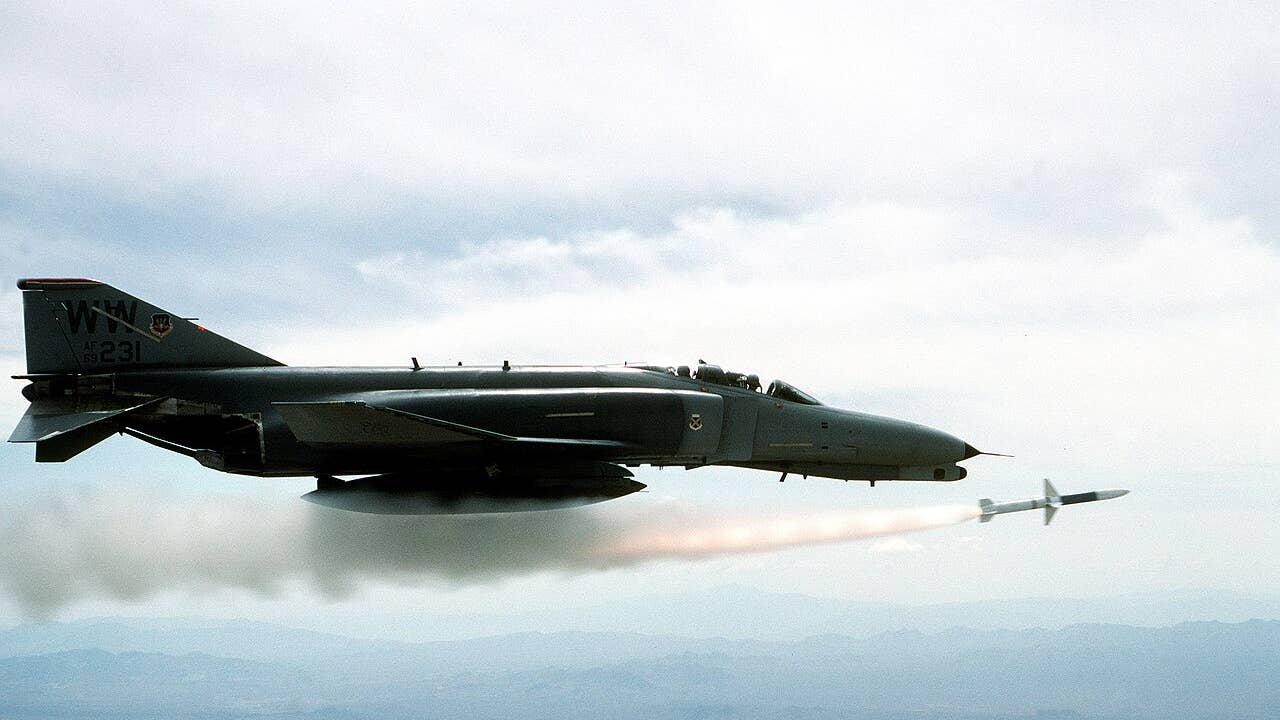‘Operation Bolo’ was the ultimate bait and switch in the sky

A U.S. Air Force McDonnell Douglas F-4G Phantom II aircraft (s/n 69-7231) of the 37th Tactical Fighter Wing launches an AGM-45 Shrike missile near George Air Force Base, California (USA) on 1 August 1988. This aircraft was retired to the AMARC as FP0838 on 17 April 1992 and later converted to an QF-4G drone. Wikimedia Commons.
SUMMARY
Think of Operation Bolo as a high-stakes poker game in the sky, a clever plan conceived amidst the Vietnam War when the United States Air Force was facing a daunting challenge. By late 1966, despite their advanced technology, they were losing F-105 Thunderchief fighters to the enemy's Soviet-made surface-to-air missiles. Something had to change.
Enter Col. John J.B. Stone.
He devised a devilishly simple strategy: trick the enemy into thinking they were engaging one type of aircraft when, in fact, they were facing another. Using his strategy, American pilots flew their F-4 Phantom II fighter jets along the same paths the bombers usually took. But, surprise! Instead of bombers, they faced the nimble and agile F-4s, resulting in the successful shootdown of seven enemy planes, Mikoyan-Gurevich MiG-21 interceptors.
A high-speed ballet of dogfights
On January 2, 1967, the trap was sprung. Seven flights of F-4s, codenamed after weapons like "Olds," "Ford," and "Rambler," baited the MiGs into the open. Within just 12 minutes, a frenzied high-speed ballet unfolded in the sky. The result? The Air Force shot down seven MiGs, dealing a significant blow to the North Vietnamese Air Force without losing a single plane.
The impact
Operation Bolo wasn't just a one-off victory but a turning point in the air war over North Vietnam. The devastating loss forced the North Vietnamese to withdraw their MiGs for several weeks, buying crucial time for U.S. missions. Moreover, the operation sent a clear message: the U.S. Air Force could and would adapt their tactics to outsmart the enemy.
Crafting the bait
The genius of Operation Bolo lay in its simplicity. Stone's plan called for F-4 Phantom IIs to take on the guise of F-105 Thunderchiefs, mimicking their radar signatures and flight paths to lure enemy MiGs into a trap. This elaborate ruse required a deep understanding of the aircraft's technology and a keen insight into enemy tactics. It was a task that Stone was uniquely equipped to handle.
A legacy in the skies
Col. Stone's strategic brilliance was reflected in the successful execution of Operation Bolo. Even more importantly, it also left a lasting impact on Air Force tactics. Stone's principles of deception and adaptive strategies continue to influence modern aerial warfare.
Flying with the pack
Even years after the operation, Stone's connection to the event remained strong. He was honored with the opportunity to fly with the "Wolf Pack" once more, a fitting tribute to the man who masterminded one of the most successful missions in U.S. Air Force history.
Stone's contributions were further recognized when he visited Nellis Air Force Base to present the prestigious Red Flag Nellis Award. Here, his legacy as an astute military tactician was celebrated, underlining the enduring impact of his visionary approach.
The story of Operation Bolo and its architect, Col. Stone, is a testament to human ingenuity in the face of adversity. It is a timeless reminder that the right strategy, coupled with courage and innovation, can change the course of history.
SHARE
